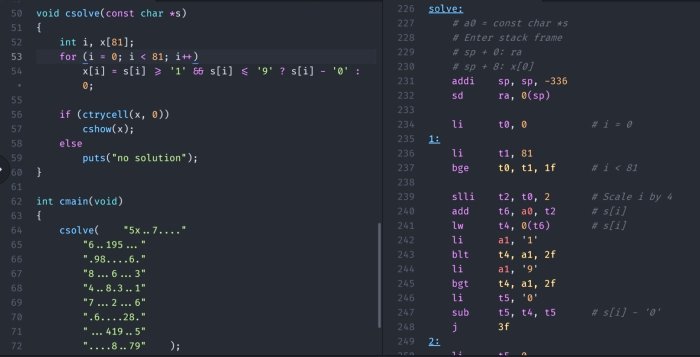
Writing assembly is itself an art. When C, C++, or any other language is compiled, the compiler determines the art of writing assembly. However, this time, we will some of the techniques and decisions we can make to write these ourselves.
We will use RISC-V to see how to design logic, write up the logic, and translate the logic into assembly.
Tip 1: Design the Logic in a Comfortable Language
This is the hardest step to get right with my students. Many students want to sit down and write the complete package. However, if you’re not comfortable with assembly, this is a doomed approach. Instead, to divide the logic from the language, we have to write in a language we understand.
If a student doesn’t know C or some lower-level language, then I suggest they write in pseudocode. Too high of a language will make the translation harder and too low of a language will make the logic design harder. So, I recommend C or C++, or some language at that level.
When translating, it is helpful to have some sort of editor that can place them side-by-side. Keeping a list of instructions in your brain is difficult, especially if you’re translating a complex program.